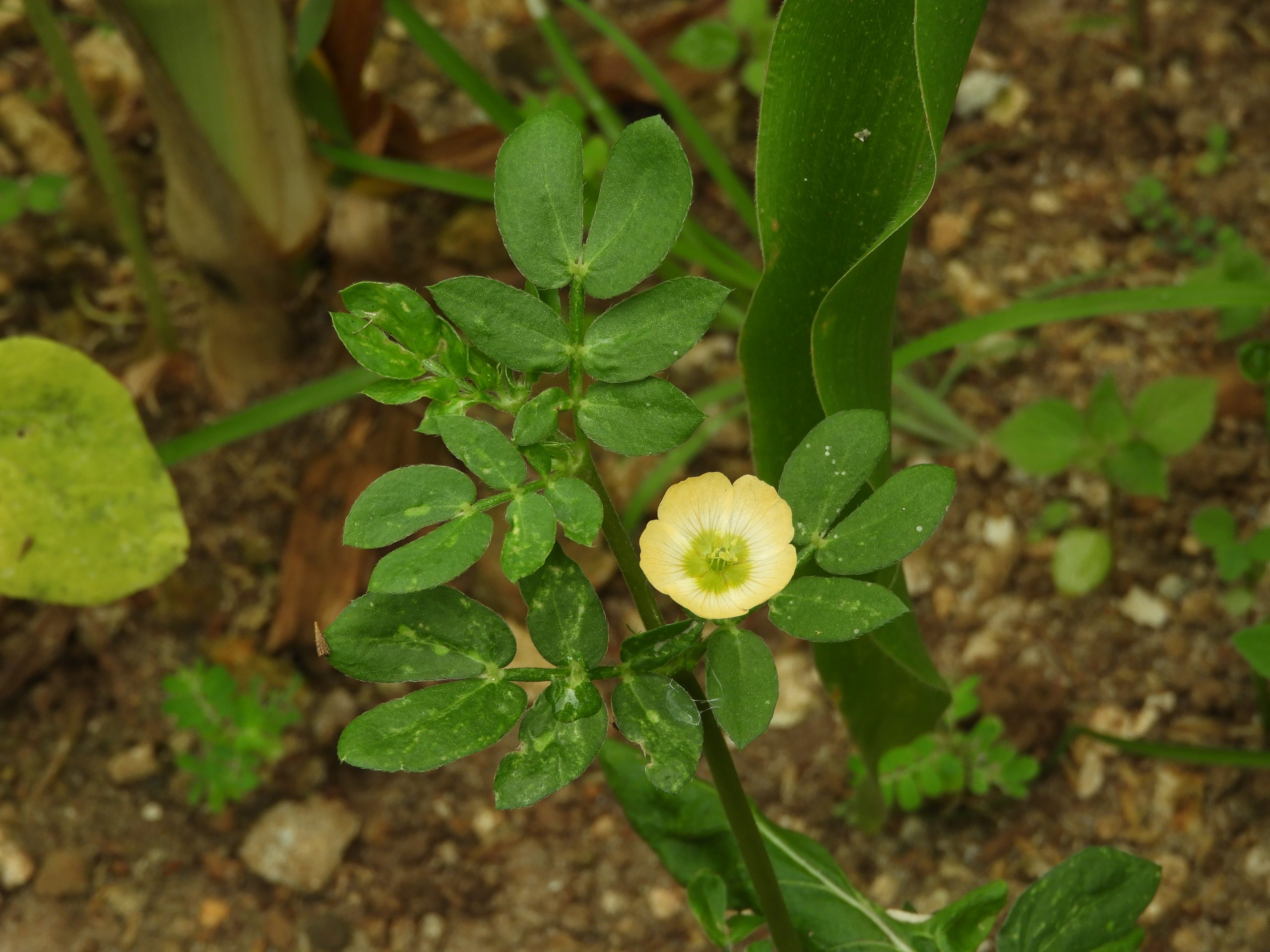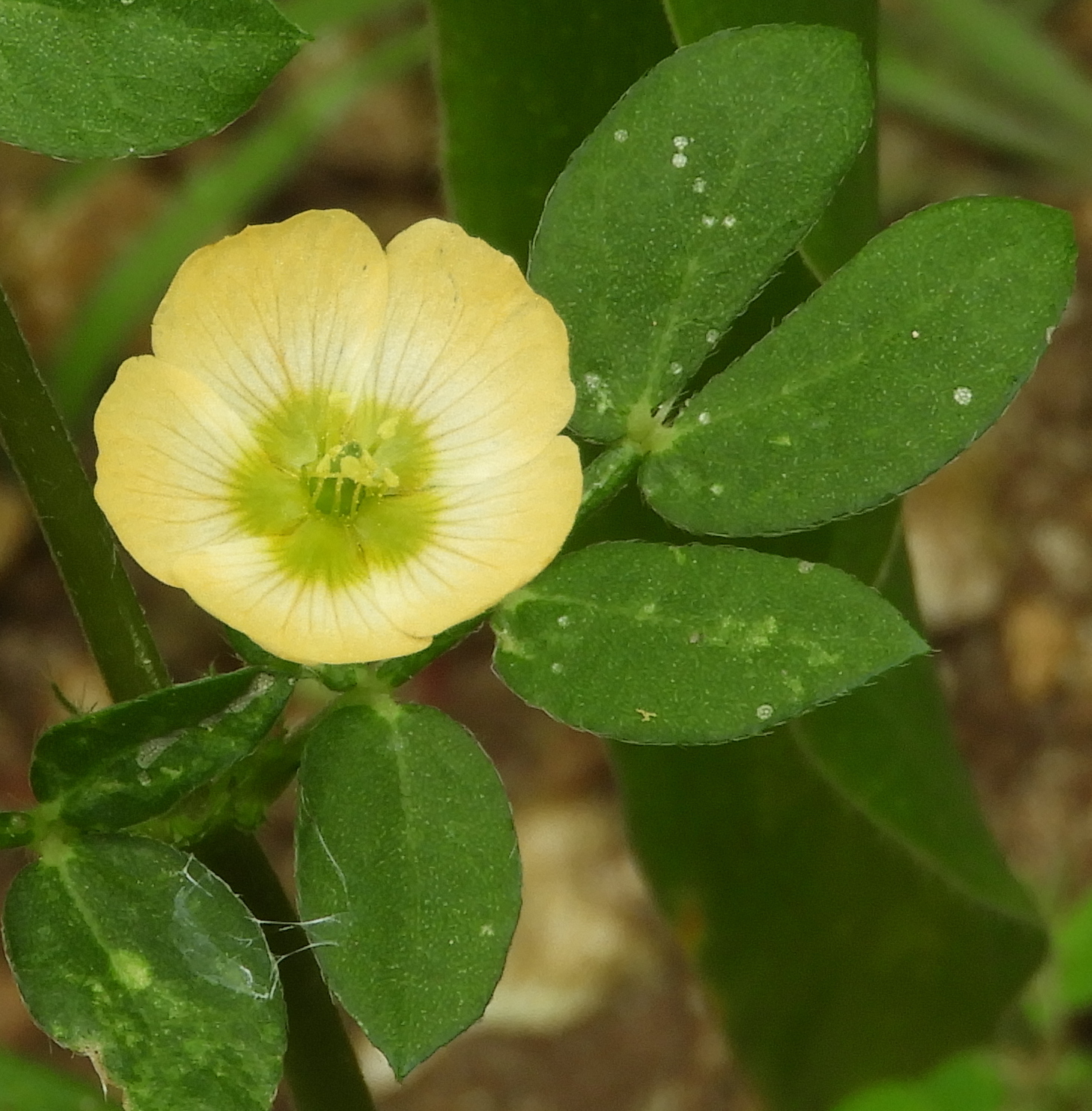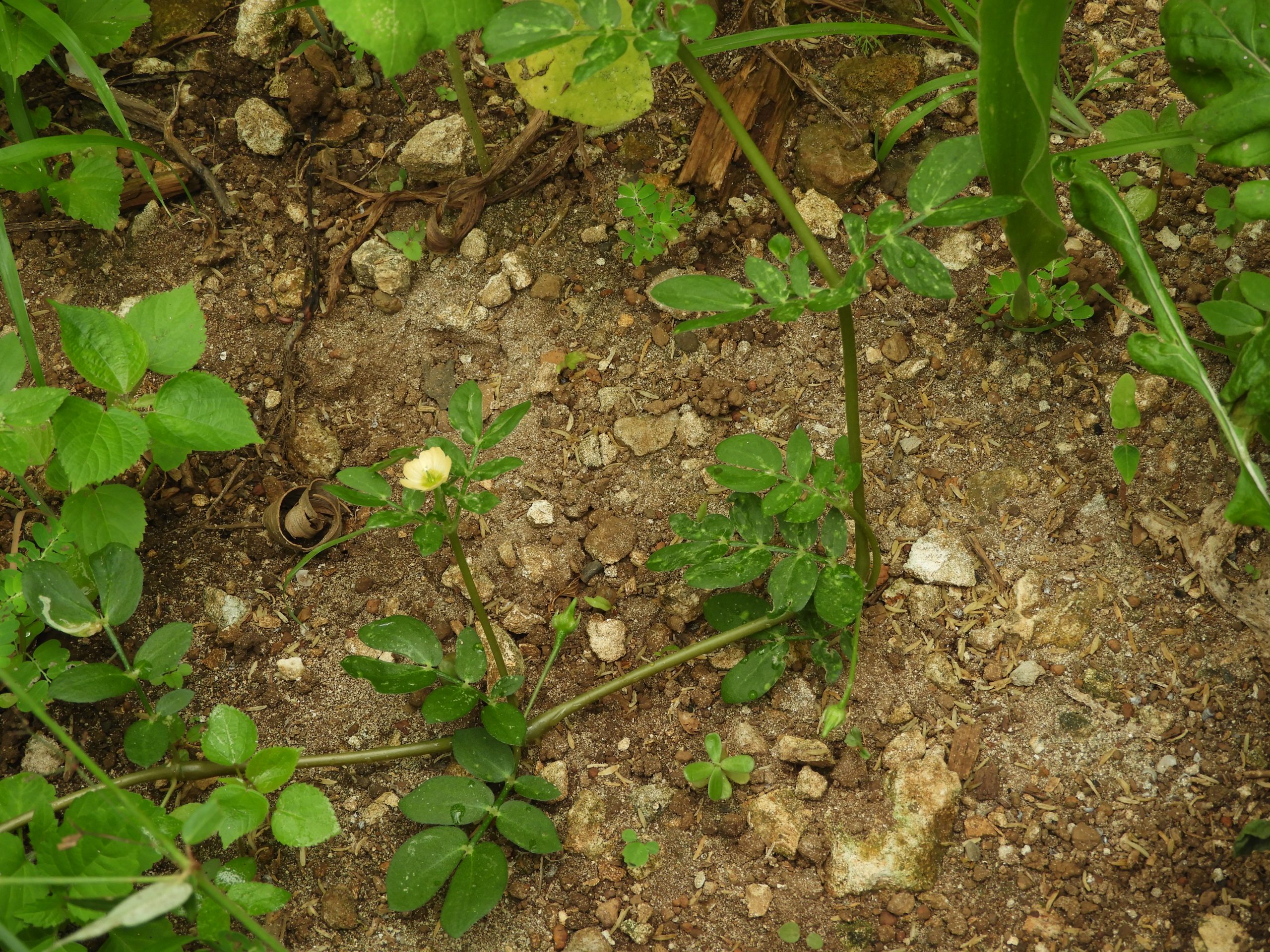Habit: Kallstroemia maxima grows as a procumbent annual herb up to spreading outward to 1 m. The stems slightly pubescent. The pinnately compound leaves are arranged oppositely, to 6 cm with 3-4 pairs of leaflets. Leaflets oblong to elliptic, to 3 cm long with an entire leaf margin, an acute/obtuse leaf apex and are lightly pubescent.
The complete, perfect, actinomorphic flowers are solitary arising from nodes. The calyx has 5, unfused, pubescent greenish sepals. The corolla has 5, unfused, yellow/orange with striations, petals. There are 10 stamens. The pubescent ovary is superior with 5 locules and numerous seeds. At the base of the over is a 5 lobed nectary gland. The fruit is a beaked capsule.
Habitat: Kallstroemia maxima grows in Human Altered environments (yards, abandoned fields, roadsides).
Distribution: Kallstroemia maxima occurs in the northern and central island groupings of the Lucayan Archipelago, the Caribbean region, the southern United States, Central and northern South America.
Medicinal/Cultural/Economic usage: Kallstroemia maxima is not known to be used medicinally in the Lucayan Archipelago.


